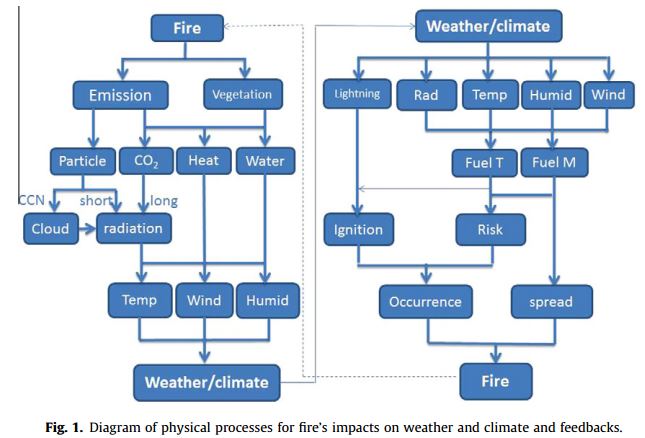Research: global wildfires did not kill the dinosaurs
Contrary to what other researchers concluded, a new study revealed that an asteroid that hit the Earth 65 million years ago on the Yucatan Peninsula in Mexico did not cause global wildfires that wiped out the dinosaurs. The first study led scientists to think that the impact raised temperatures to 1,000 degrees C, igniting global wildfires that killed most organisms.
The latest research team from Royal Holloway, University of London, led by Claire Belcher, concluded that “…the amounts of thermal radiation released by the impact of an asteroid with the Earth 65 million years ago, were not as significant as previously thought, and the energy component of the K-T event was not responsible for the extinctions seen at this time”.
Research: Understanding evacuation preferences and wildfire mitigations among Northwest Montana residents
The paper with the above title, written by Travis Paveglio, Tony Prato, Douglas Dalenberg, and Tyron Venn, employees who work at state Universities in Idaho, Missouri, and Montana, is available for taxpayers to read if they pay $25 to an organization in Australia.
Public Service Announcements about wildfire
An organization in Nevada has produced and released nine 31-second public service announcements about wildfire evacuation and defensible space. The list is HERE, and below is an example:
Colorado state Senator has second thoughts about bill that would have limited agricultural burning
A Colorado state Senator who introduced a bill that would allow county commissioners to ban agricultural burning and campfires when fire danger is high has had second thoughts and now wants to pull the bill. Senator Larry Crowder from Alamosa, under pressure from farmers, said Friday that there could be a possibility of county officials over using the power. The bill already passed the House by a 36 to 27 vote on February 14.
A tweet from Smokey Bear
Please remember to be safe with fire when you go out into the forest. Only you… #wildlife #wildfire pic.twitter.com/I7QDzi6Dzq
— Smokey Bear (@smokey_bear) March 24, 2014
Tweets about a fire in Capetown, South Africa
(Hopefully the photos will appear below. Sometimes they do, and sometimes they don’t.)
Many thanks to the brave firefighters from the @vwsfires who fought the wildfire near Simonstown y/day. pic.twitter.com/6PH2XViKH9
— Lewis Pugh (@LewisPugh) March 22, 2014
If you have any pics from yesterdays large #wildfire, plz share them with us. Pic from @WhatsThePointSA pic.twitter.com/760K2k7zoR @945Kfm
— VWS Wildfire (@vwsfires) March 22, 2014




